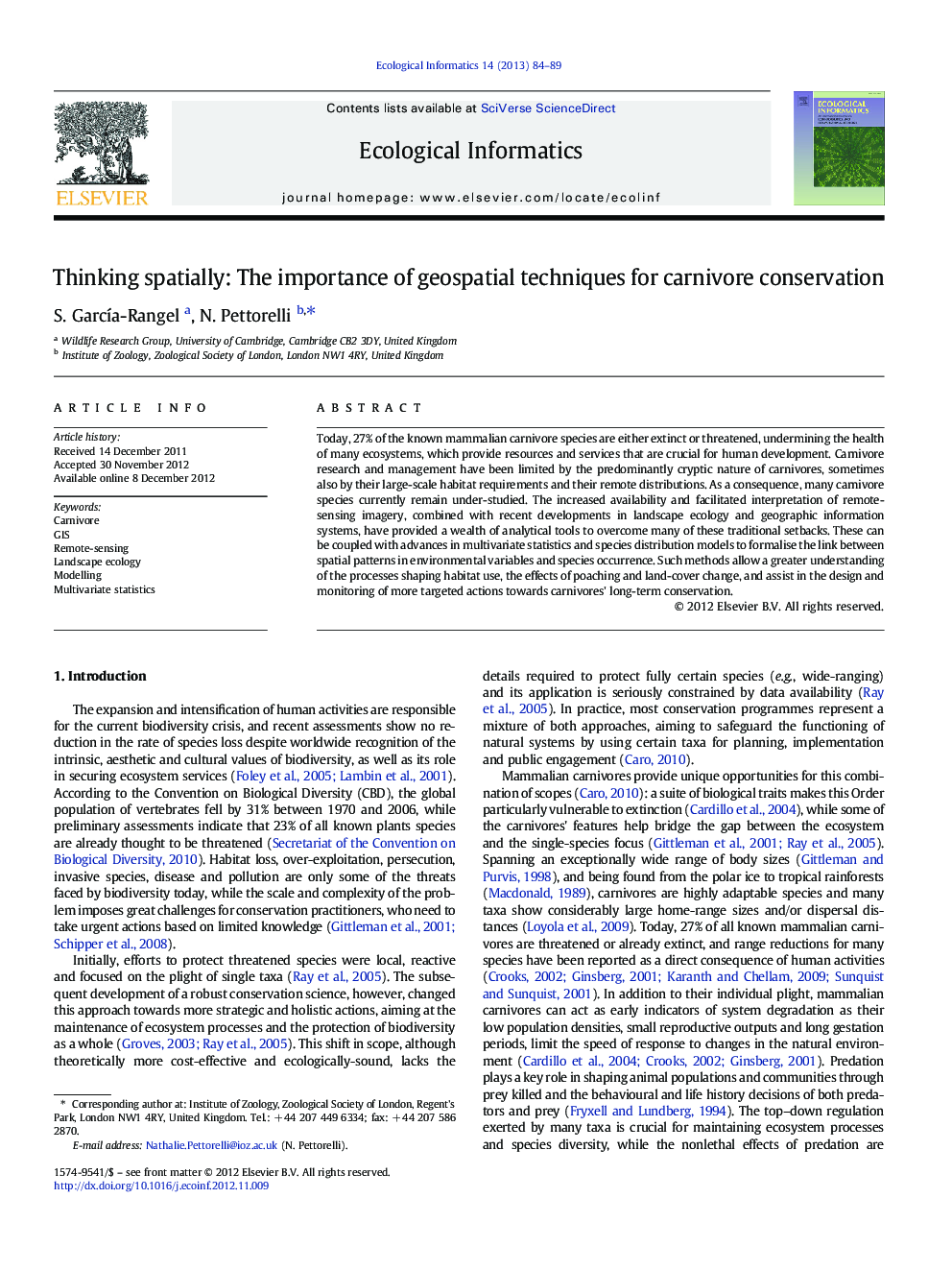| Article ID | Journal | Published Year | Pages | File Type |
|---|---|---|---|---|
| 4375052 | Ecological Informatics | 2013 | 6 Pages |
Today, 27% of the known mammalian carnivore species are either extinct or threatened, undermining the health of many ecosystems, which provide resources and services that are crucial for human development. Carnivore research and management have been limited by the predominantly cryptic nature of carnivores, sometimes also by their large-scale habitat requirements and their remote distributions. As a consequence, many carnivore species currently remain under-studied. The increased availability and facilitated interpretation of remote-sensing imagery, combined with recent developments in landscape ecology and geographic information systems, have provided a wealth of analytical tools to overcome many of these traditional setbacks. These can be coupled with advances in multivariate statistics and species distribution models to formalise the link between spatial patterns in environmental variables and species occurrence. Such methods allow a greater understanding of the processes shaping habitat use, the effects of poaching and land-cover change, and assist in the design and monitoring of more targeted actions towards carnivores' long-term conservation.
